We spent three nights in Kokand sightseeing. Here are some of the highlights of Kokand.
About the city of Kokand

Kokand is a city of 200,000 inhabitants in the eastern part of Uzbekistan. Located in the Fergana Valley, which leads to Tajikistan and Kyrgyzstan, the region is well known for its devout Muslim population.
Kokand is one of the oldest cities in Uzbekistan, and it is known that the city existed at least as early as the 10th century. It flourished as a stopover for caravans on the Silk Road, but was destroyed by the Mongols in the 13th century.
The existing city was reconstructed in the 18th century as a city of the Uzbek kingdom. Not many people visit the city for tourism purposes, as not much of the old city remains. But some travellers visit it as a gateway to the beautiful Fergana Valley.
The Palace of Khudayar Khan
Built between 1863 and 1874 by Khudayar Khan, the last ruler of the Khokand Khanate.
Although most of the palace was destroyed by the Soviet Union, 19 rooms remain and are open to the public. Part of the building was used as a museum, displaying items from China, Japan and India, as well as ancient excavated materials.
The facade is decorated with mosaic tiles. For foreigners, the entrance fee is 25,000 som per person. There is also a café.
Juma Mosque
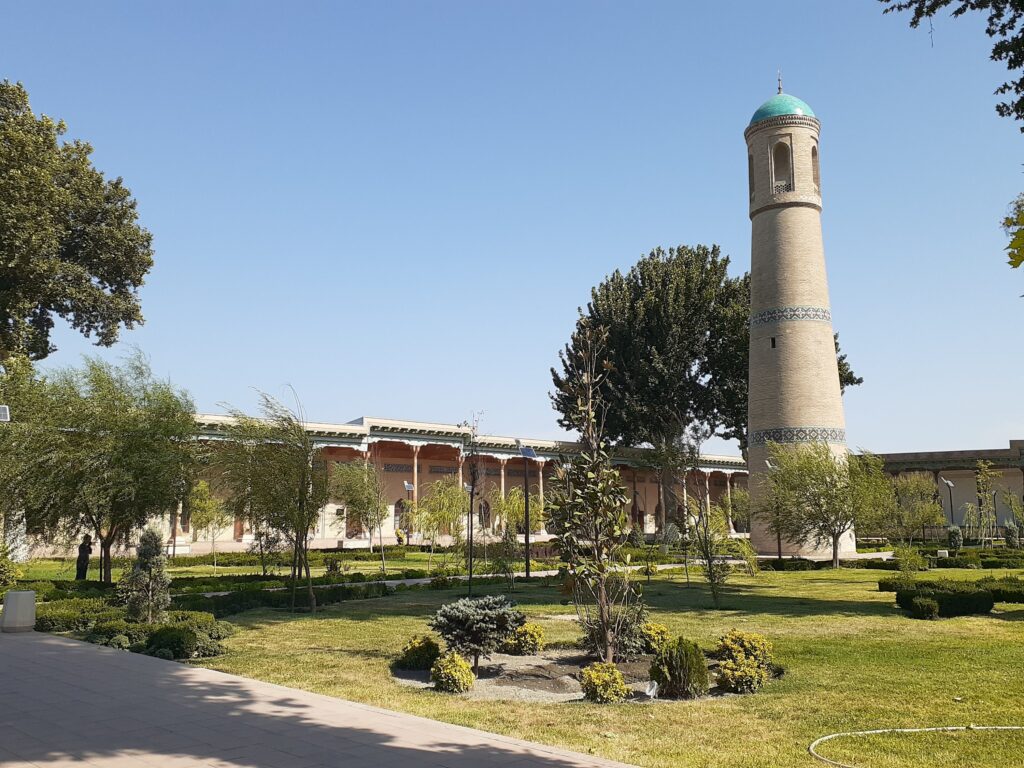
Built by Muhammad Umar Khan between 1812 and 1818, this mosque is built around a courtyard with a 22-metre minaret.
Norbutabiy Madrassah
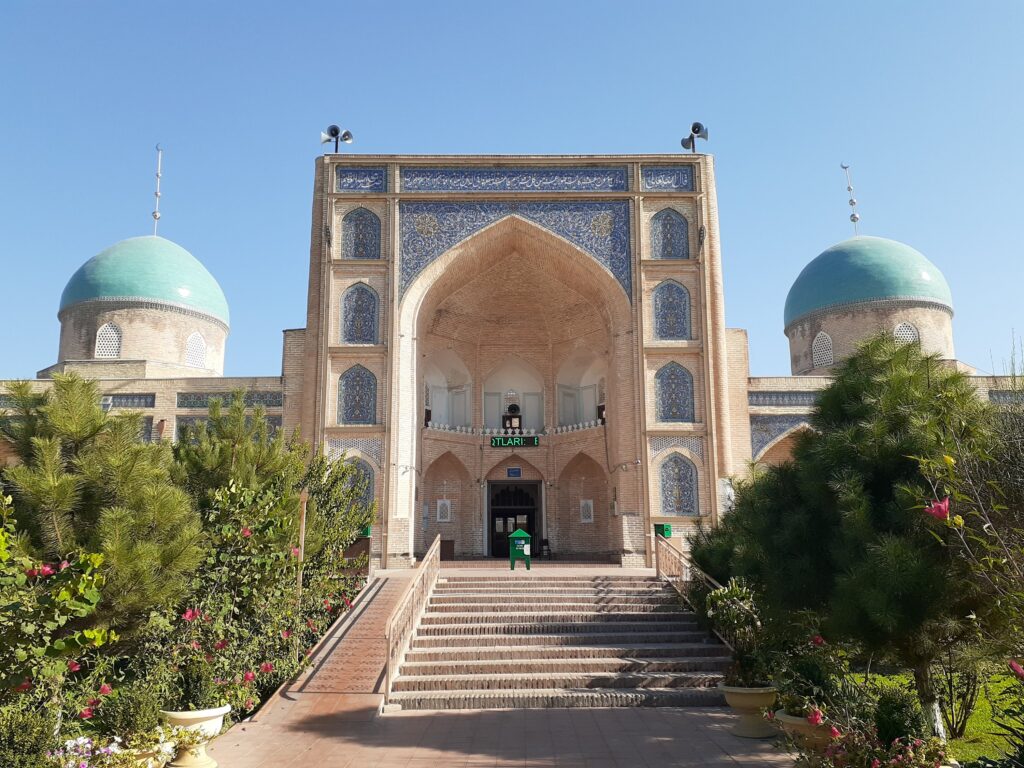
This madrassah was built in the 1790s and houses the tombs of Muhammad Umar Khan and his wife, the poet Nodira. During the Soviet era, many madrassas were banned from operating, but this madrassah was an exception and continued to serve as an Islamic seminary.
It has beautiful blue domes behind the facade designed with a series of arches.
Khamza Theatre of the Uzbek Musical Drama
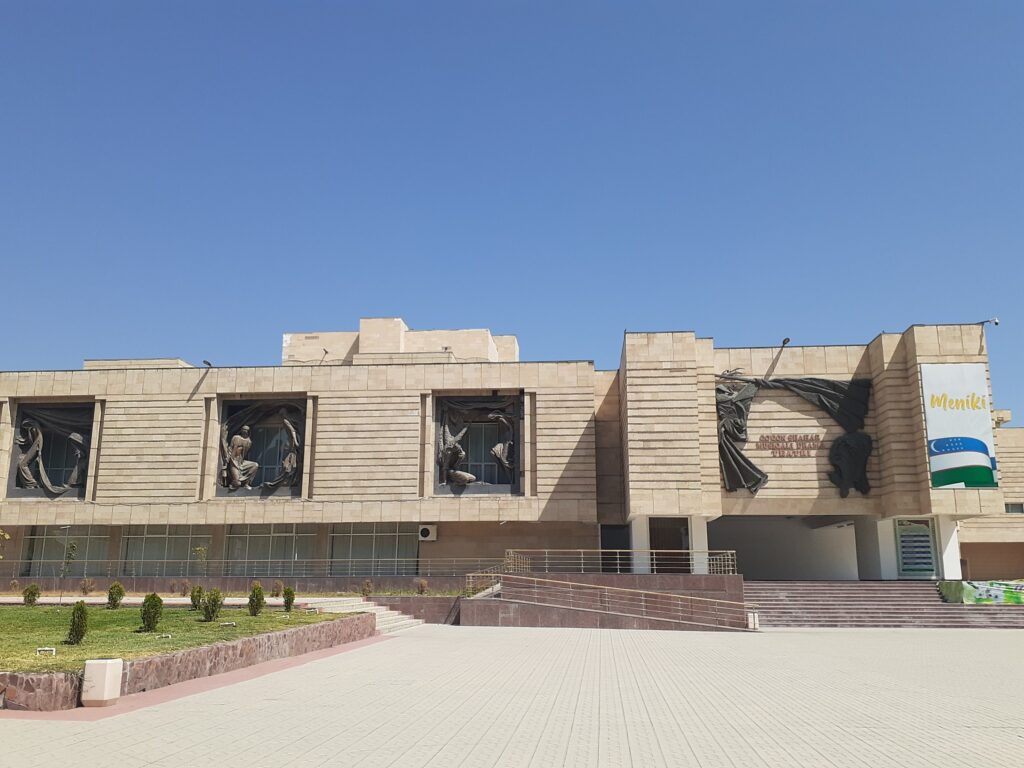
This state theatre was completed in 1987 as a theatre for dance and drama. It was planned as part of the modernisation of Uzbekistan.
The building has a simple box shape and is decorated with sculptures in a framed manner. An outdoor stage was also installed.
Dasturkhonchi madrasa
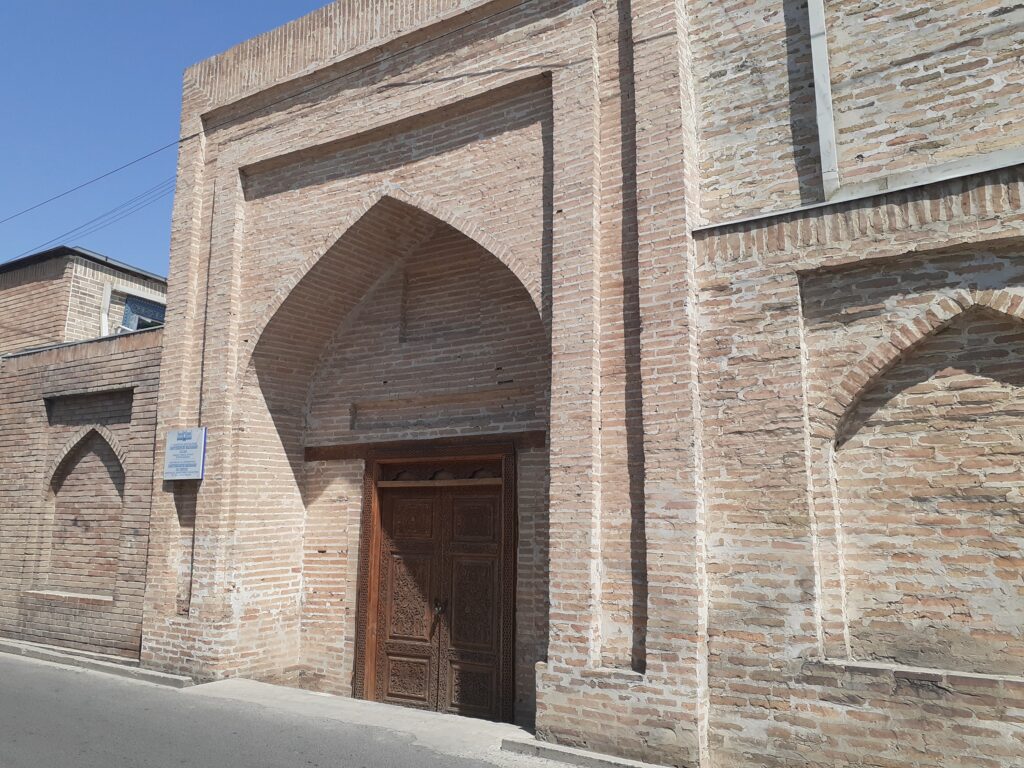
This was built in 1833 as a boys’ school, but is now used by girls to study embroidery. When we visited, it was locked and we could not see inside.
Day trip from Kokand to the pottery town of Rishtan
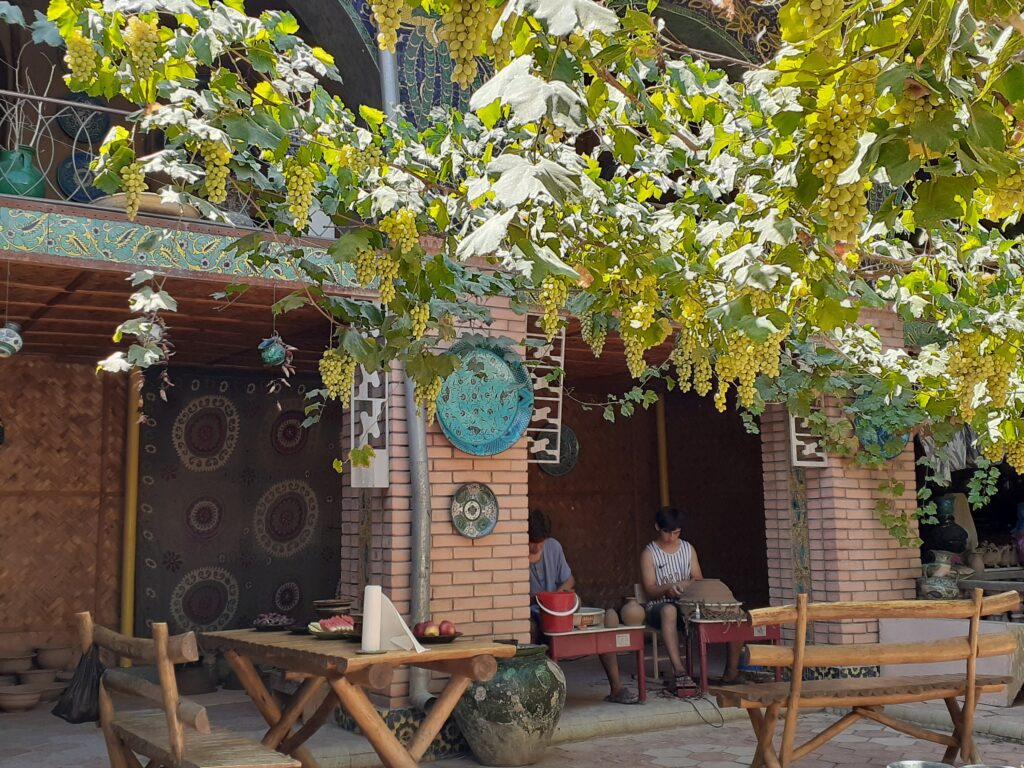
A day trip from Kokand takes you to Rishtan, which is famous for its pottery. It is said that 90% of Uzbekistan’s pottery is produced in Rishtan. There are many pottery workshops in the town, which we were able to visit. The details are reported in a separate post.

Accommodation in Kokand

We spent three nights in Kokand and stayed in two accommodation. We stayed two nights at the Rohat Hostel. Unusually for accommodation in Uzbekistan, breakfast was not available in this property, and an air-conditioned twin room cost 300,000 Soms per night (direct booking, including taxes and registration fee). The room was clean and the staff were all friendly. It was somewhat noisy as they face the main road, but even so, we liked our room very much.
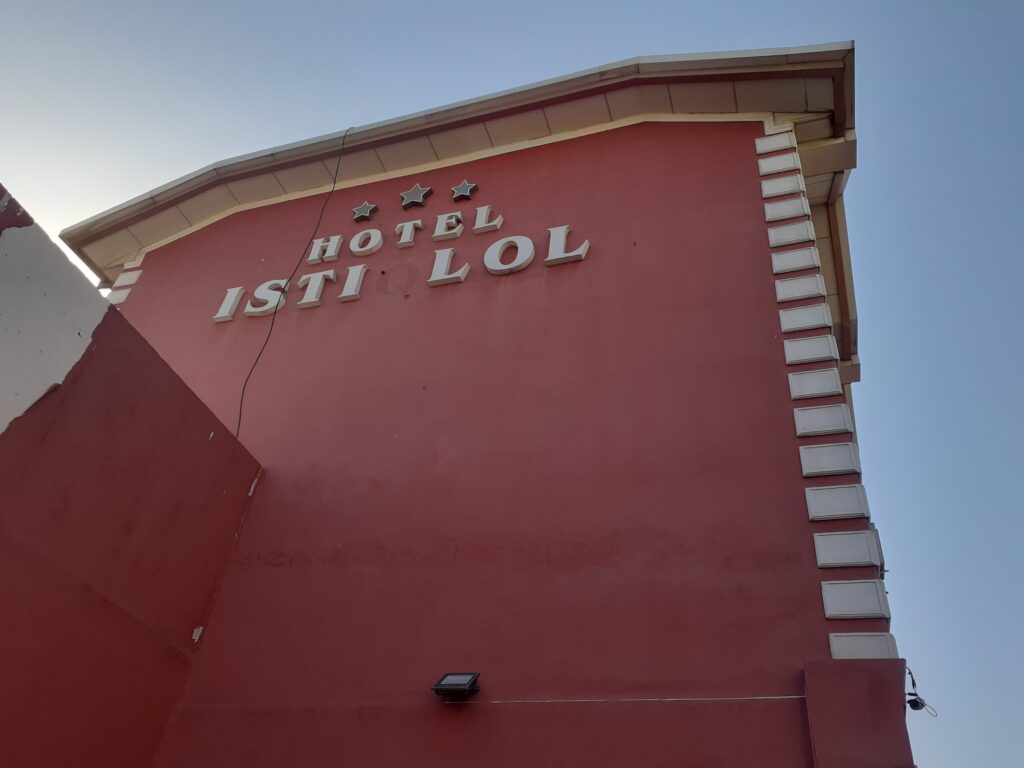
Another place we stayed at was Hotel Istiqlol, near the palace. The room rate here was the same as Rohat Hostel, 300,000 som without breakfast. However, the air conditioning in the room did not work very well, so we changed hotels. Staff were friendly and some spoke English. The location was good and quiet, so I will write this down as one option.
Dining in Kokand
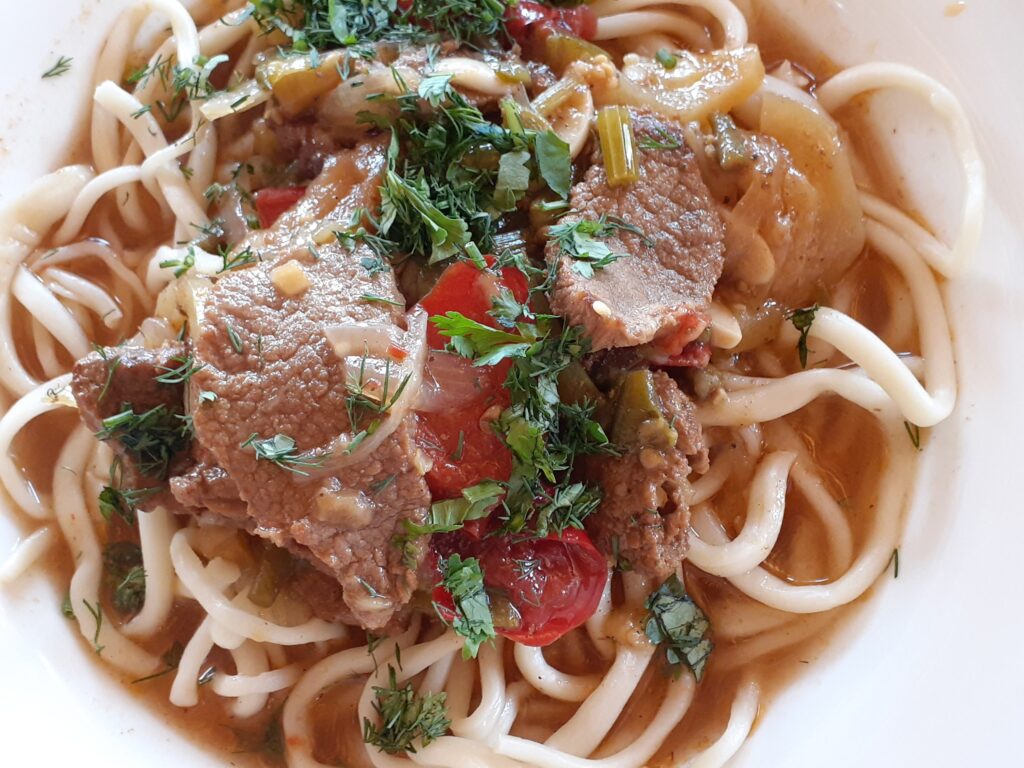

Our favourite restaurant in Kokand was Dasturxon Nematlari, near the Rohat hostel. As well as shashlik (lamb skewers), they also had plov and ragman (handmade noodles), but everything was tasty and reasonably priced. The restaurant was always busy with locals.
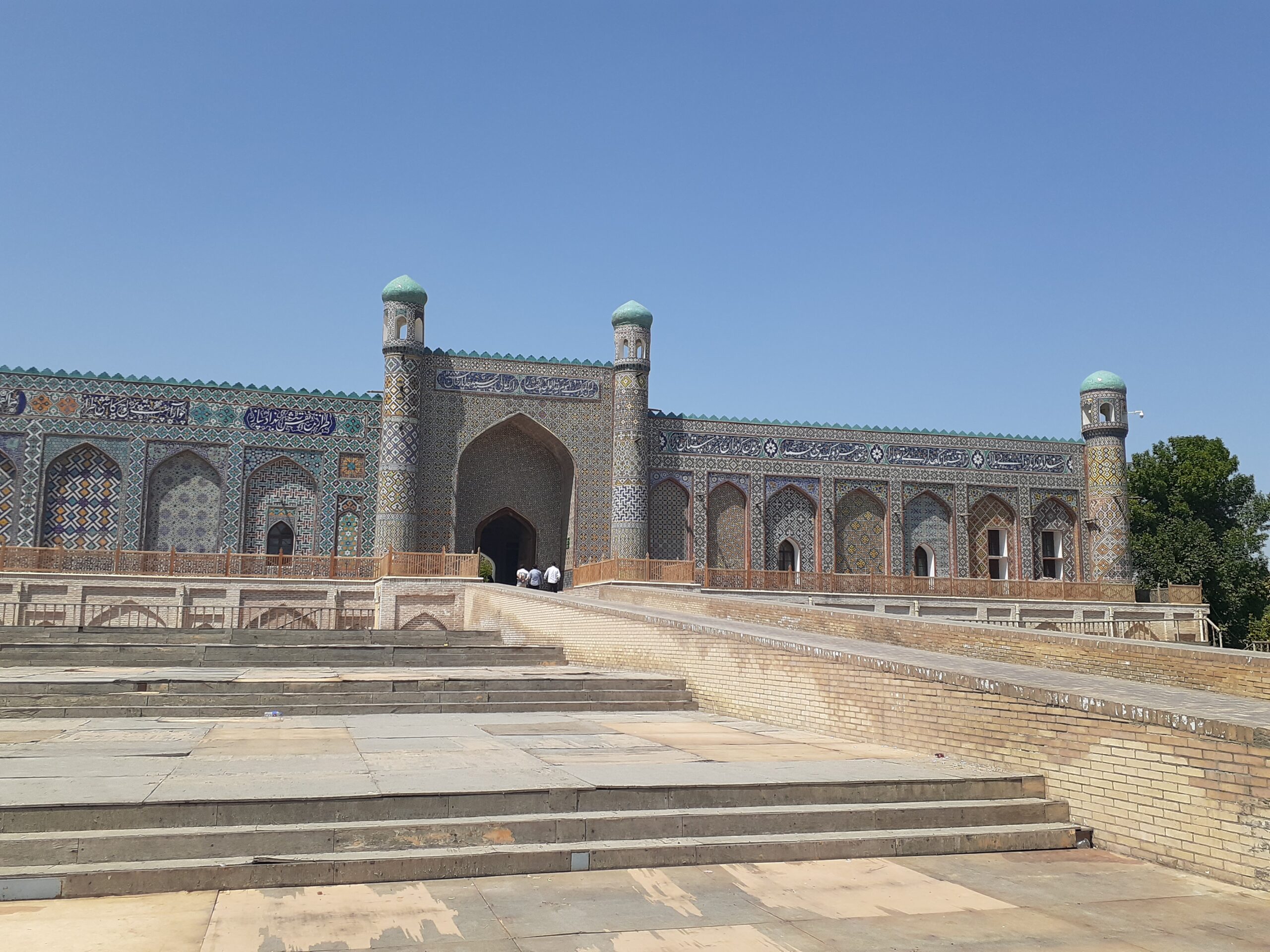


Comment